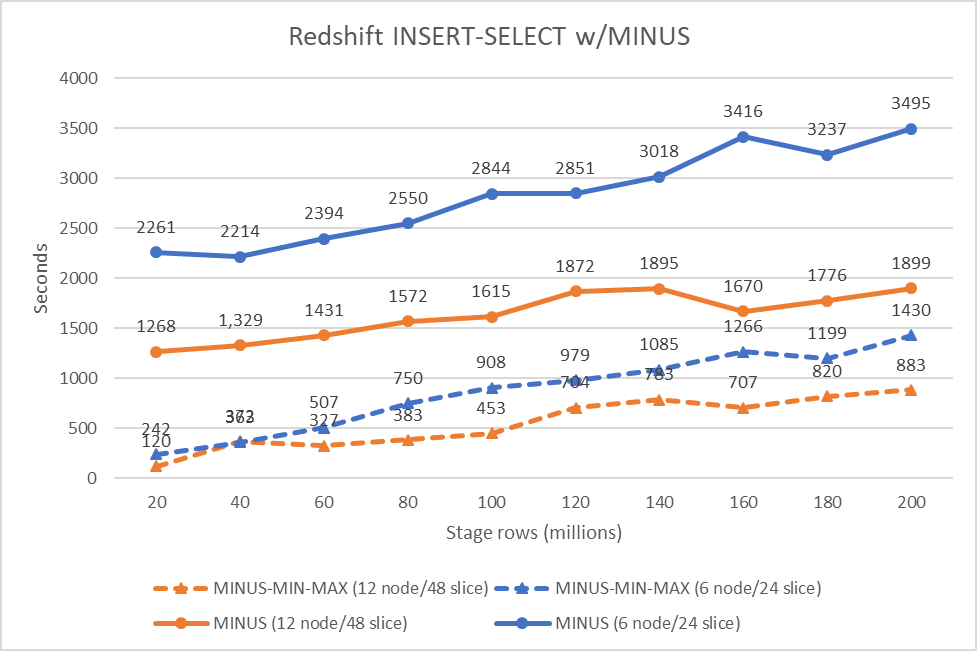AWS Big Data Blog
Category: Amazon Redshift
Amazon Redshift continues its price-performance leadership
Data is a strategic asset. Getting timely value from data requires high-performance systems that can deliver performance at scale while keeping costs low. Amazon Redshift is the most popular cloud data warehouse that is used by tens of thousands of customers to analyze exabytes of data every day. We continue to add new capabilities to […]
Automate notifications on Slack for Amazon Redshift query monitoring rule violations
In this post, we walk you through how to set up automatic notifications of query monitoring rule (QMR) violations in Amazon Redshift to a Slack channel, so that Amazon Redshift users can take timely action. Amazon Redshift is a fully managed, petabyte-scale data warehouse service in the cloud. With Amazon Redshift, you can analyze your […]
Share data securely across Regions using Amazon Redshift data sharing
July 2023: This post was reviewed for accuracy. Today’s global, data-driven organizations treat data as an asset and use it across different lines of business (LOBs) to drive timely insights and better business decisions. This requires you to seamlessly share and consume live, consistent data as a single source of truth without copying the data, […]
Accelerate Snowflake to Amazon Redshift migration using AWS Schema Conversion Tool
July 2023: This post was reviewed for accuracy. Amazon Redshift is a fully managed, petabyte-scale data warehouse service in the cloud. You can start with just a few hundred gigabytes of data and scale to a petabyte or more. This enables you to use your data to acquire new insights for your business and customers. […]
Integrate Amazon Redshift native IdP federation with Microsoft Azure AD using a SQL client
June 2023: This post was reviewed and updated for accuracy. Amazon Redshift accelerates your time to insights with fast, easy, and secure cloud data warehousing at scale. Tens of thousands of customers rely on Amazon Redshift to analyze exabytes of data and run complex analytical queries. The new Amazon Redshift native identity provider authentication simplifies […]
Integrate Amazon Redshift native IdP federation with Microsoft Azure AD and Power BI
June 2023: This post was reviewed and updated for accuracy. Amazon Redshift accelerates your time to insights with fast, easy, and secure cloud data warehousing at scale. Tens of thousands of customers rely on Amazon Redshift to analyze exabytes of data and run complex analytical queries. As enterprise customers look to build their data warehouse […]
Simplify management of database privileges in Amazon Redshift using role-based access control
Amazon Redshift is a fully managed, petabyte-scale data warehouse service in the cloud. With Amazon Redshift, you can analyze all your data to derive holistic insights about your business and your customers. One of the challenges with security is that enterprises don’t want to have a concentration of superuser privileges amongst a handful of users. […]
What to consider when migrating data warehouse to Amazon Redshift
Customers are migrating data warehouses to Amazon Redshift because it’s fast, scalable, and cost-effective. However, data warehouse migration projects can be complex and challenging. In this post, I help you understand the common drivers of data warehouse migration, migration strategies, and what tools and services are available to assist with your migration project. Let’s first […]
Federated access to Amazon Redshift clusters in AWS China Regions with Active Directory Federation Services
Many customers already manage user identities through identity providers (IdPs) for single sign-on access. With an IdP such as Active Directory Federation Services (AD FS), you can set up federated access to Amazon Redshift clusters as a mechanism to control permissions for the database objects by business groups. This provides a seamless user experience, and centralizes the governance […]
Accelerate your data warehouse migration to Amazon Redshift – Part 5
This is the fifth in a series of posts. We’re excited to share dozens of new features to automate your schema conversion; preserve your investment in existing scripts, reports, and applications; accelerate query performance; and potentially simplify your migrations from legacy data warehouses to Amazon Redshift. Check out the all the posts in this series: […]









